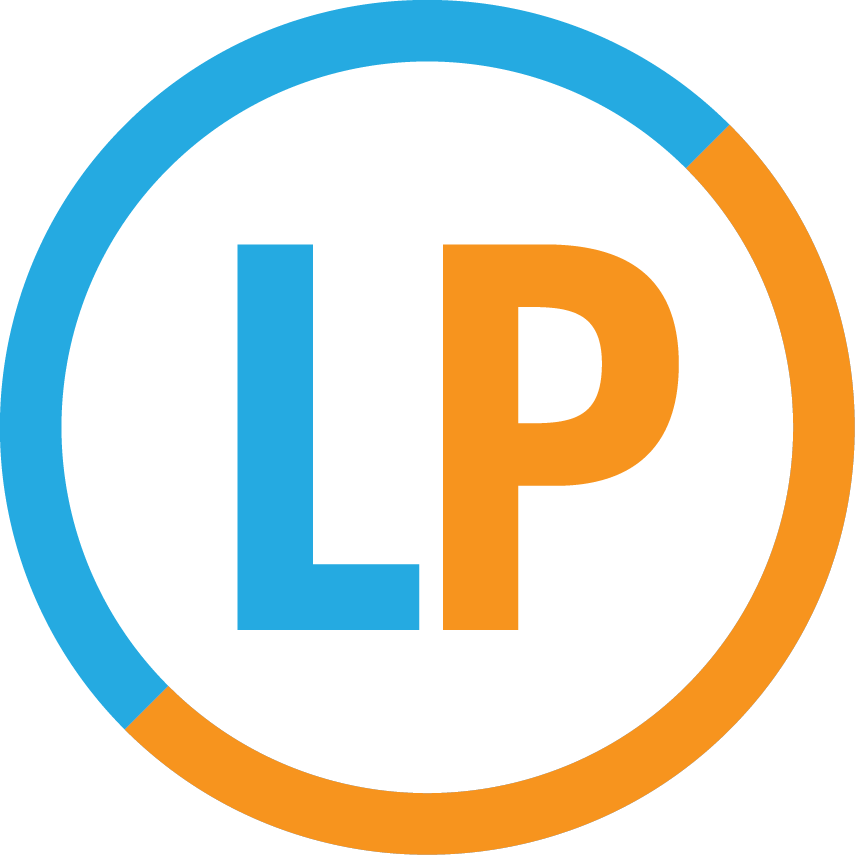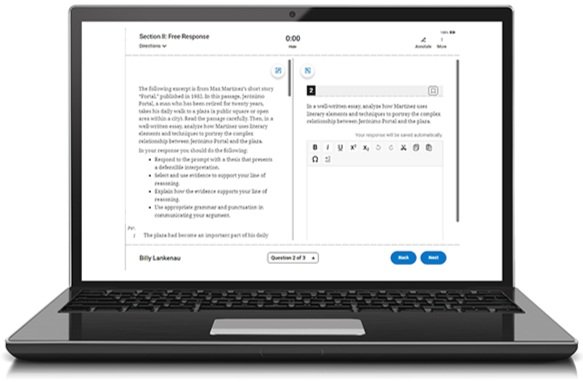2023 is upon us, and with it comes the arrival of the digital SAT.
For international students, the digital version of the test will now replace the paper-based version, beginning this month. For students in the United States, the digital version of the PSAT will arrive this fall, followed by the digital version of the SAT starting in 2024.
To see an overview of the structural changes in the new version of the test, check out our previous blog post. To alleviate some of the anxiety around this transition, I thought it would be helpful to dive a bit deeper into the user experience and specific content of the test.
What to Expect: Technology
The test will be administered in schools and testing centers, meaning that students will be taking the test on laptops and tablets that meet the College Board specifications.
Students planning to use their own devices should download the Bluebook software to confirm that it is compatible with their device and get comfortable with the layout.
Students who do not have their own device that meets these requirements will need to work on a school-provided device or contact the College Board to request a loaned device, which involves answering a series of questions and getting a recommendation from a qualified adult, such as a counselor, school administrator, or teacher. Requests for devices from the College Board could take several weeks, so it is important to check your own device or communicate with your school as soon as possible.
The interface of the digital SAT is user-friendly, providing a clearly displayed timer and easy access to a question menu that shows which questions are completed, skipped, or marked for review, allowing students to quickly skip around within the section.
The test also features tools to annotate questions, eliminate answer choices, and zoom in and out freely. Math sections provide students with reference tables featuring basic geometry formulas (the same ones given on the current test) and a calculator developed by Desmos that allows for graphing and advanced calculations, though students are still free to bring their own calculator to the exam.
What to Expect: Content
The best way for students to familiarize themselves with the test content is to explore the eight full-length practice tests released by the College Board, four of which are adaptive and available in the Bluebook software.
Khan Academy is continuing its partnership with the College Board to offer official prep content, but it currently has only 44 practice questions for the verbal portions of the test and has recycled math practice content from the current format of the test.
If you’re still early in preparing for the exam, I recommend familiarizing yourself with the content and format through the four lineal (non-adaptive) tests produced by the College Board. Try to save the four adaptive tests on the Bluebook software for closer to when you take the real test, since it is unclear when more adaptive practice tests may become available.
Math
The math content will remain largely unchanged from the paper test.
The College Board has shifted a bit of emphasis from data analysis to geometry and advanced math topics such as exponential and polynomial functions. The fill-in answers now allow students to enter negative answers and include one more decimal place than the paper version of the test, but the questions will look and feel very familiar to anyone who has been preparing for the paper test.
Verbal
The verbal sections will look and feel very different from the paper version of the test.
Gone are the long passages and sets of questions, replaced by individual questions each accompanied by their own short text. Each verbal section starts with vocabulary in context questions, followed by groups of questions testing comprehension, logical reasoning, grammar, transitions, and information synthesis. Check out the examples below of each type of question with some quick thoughts.
Vocabulary in Context
These vocabulary in context questions are similar to the ones found in the longer passages of the current test. Though I wouldn’t recommend driving yourself crazy studying vocabulary, you can find good practice for these on both the old version of the SAT (administered 2005–2016) and the GRE.
Comprehension
This comprehension question is pretty typical of what you will see in this question type. Though the passage is much shorter than what is on the current paper test, the question stem should look familiar. The College Board has also decided to incorporate poetry and comparison passage questions into these comprehension and logic questions (see below).
Logical Reasoning
On this question type, I would recommend that you start by reading the question stem. Once you clearly understand what the question is asking you to find, then go ahead and read the passage itself. The practice resources available for these shorter reading passages are limited, but some practice with shorter reading passages is available on the older (2005–2016) version of the exam.
Grammar
Once you are done with the comprehension and reasoning, you will have to tackle the grammar questions. These questions will look very similar to what is in the current Writing and Language section, only without the longer accompanying passage. All the grammar rules you have learned for the paper version of the exam will still be tested, but you won’t see questions testing common misspellings of words, so no more “affects” vs. “effects.” The example above is a typical punctuation question.
Transitions
The next type of question asks about transitions, which are a popular topic on the current Writing and Language section. There really aren’t too many transition words the College Board expects you to know, so it is worth making a flash card or taking notes any time you see one you are unfamiliar with. The example above shows a typical transition question.
Information Synthesis
The final question type in the verbal section, information synthesis, will appear the most foreign to students practicing on the paper version of the test. You will be given a series of bullet points about a topic and asked to craft a sentence that achieves a certain goal. Like with the comprehension and reasoning questions, I would recommend reading the question stem before looking at the bullet points and answer choices. Make sure to remember that grammar and phrasing are not being tested on this question type.
Hopefully these examples will help you feel a bit more comfortable and confident as you begin preparing for the Digital SAT.
Though the new version of the test will bring substantial uncertainty, just remember that it offers opportunity for success as well. Nobody who is taking this test will have had the opportunity to take practice tests every week for months and months, so there is no reason to feel behind in your preparation. The resources available may be limited, but if you dedicate yourself to becoming familiar with them, you will be in a great position to succeed on test day.









